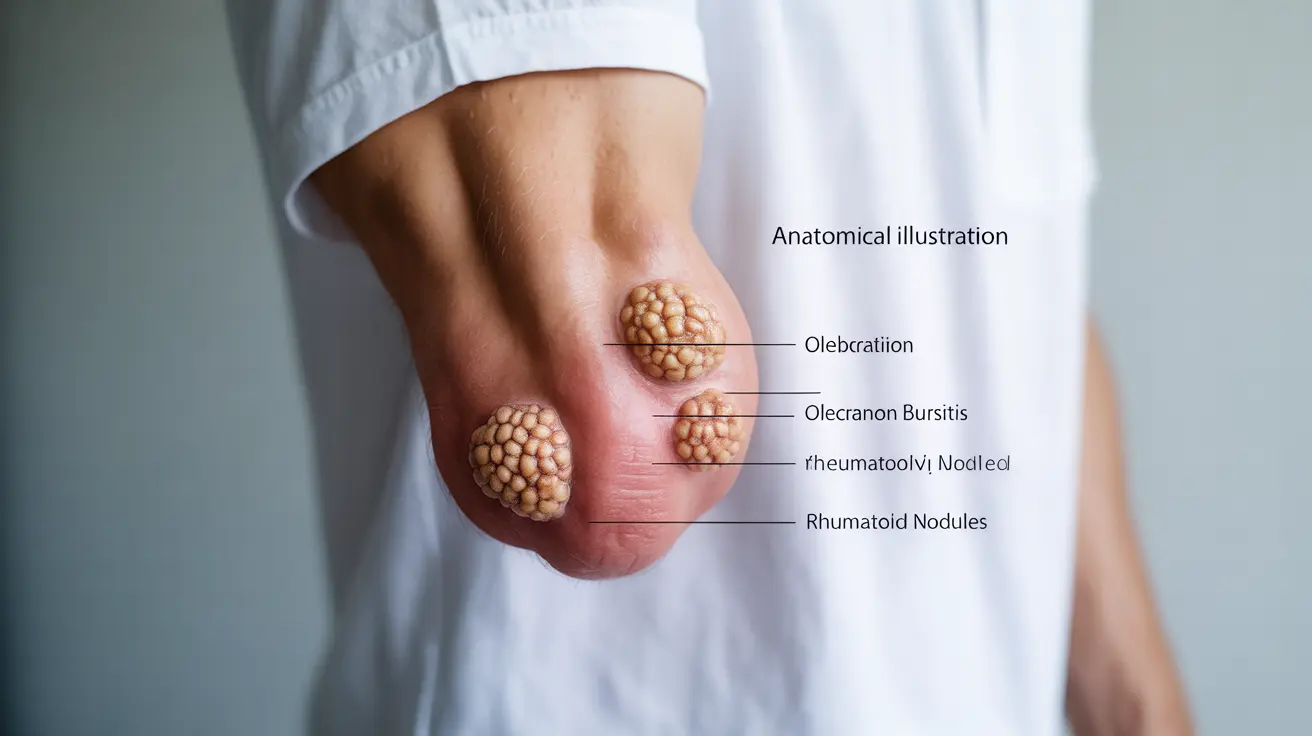Finding a bump on your elbow can be concerning, but these swellings are often treatable and may have various underlying causes. Understanding the nature of elbow bumps, their potential causes, and when to seek medical attention can help you make informed decisions about your health.
This comprehensive guide will explore the different types of elbow bumps, their symptoms, treatment options, and important warning signs that warrant medical evaluation.
Common Types and Causes of Elbow Bumps
Elbow bumps can develop for several reasons, ranging from minor injuries to underlying medical conditions. Here are the most common causes:
Olecranon Bursitis
Often called "student's elbow" or "miner's elbow," this condition occurs when the fluid-filled sac (bursa) at the tip of the elbow becomes inflamed. It typically results from repetitive pressure, injury, or infection.
Rheumatoid Nodules
These firm lumps can develop in people with rheumatoid arthritis, typically appearing on pressure points like the elbow. They're usually painless but may indicate active disease.
Cysts and Tumors
Various types of cysts and tumors can develop on the elbow, including ganglion cysts, lipomas (fatty tissue growths), and in rare cases, more serious tumors.
Signs of Infection and When to Worry
Certain symptoms may indicate an infected or serious elbow bump:
- Redness and warmth around the bump
- Severe pain or tenderness
- Fever or chills
- Rapid growth or change in size
- Restricted elbow movement
- Skin changes or ulceration
Treatment Approaches
Conservative Management
Many elbow bumps can be treated with conservative measures:
- Rest and activity modification
- Ice therapy for inflammation
- Compression wraps
- Over-the-counter pain relievers
- Protective padding
Medical Interventions
More severe cases may require professional treatment:
- Fluid aspiration
- Corticosteroid injections
- Antibiotics for infections
- Surgical removal when necessary
Prevention Strategies
Taking preventive measures can help reduce the risk of developing elbow bumps:
- Use proper padding during activities
- Avoid prolonged pressure on the elbow
- Practice good ergonomics
- Address underlying conditions like arthritis
Frequently Asked Questions
What are the most common causes of a bump on the elbow?
The most common causes include olecranon bursitis, rheumatoid nodules, cysts, and traumatic injuries. Bursitis is particularly common and often results from repeated pressure or injury to the elbow.
How can I tell if a bump on my elbow is infected or needs medical treatment?
Signs of infection include redness, warmth, severe pain, fever, and pus drainage. If you experience these symptoms, or if the bump is growing or limiting movement, seek medical attention promptly.
What treatments are available for an elbow bump caused by bursitis or arthritis?
Treatment options range from conservative measures like rest, ice, and compression to medical interventions such as fluid drainage, steroid injections, or antibiotics. The specific treatment depends on the underlying cause and severity.
When should I see a doctor about a painful or growing lump on my elbow?
Consult a healthcare provider if the bump is painful, growing, interfering with movement, shows signs of infection, or persists for more than a few weeks despite home treatment.
Can a bump on the elbow be a sign of skin cancer or other serious conditions?
While rare, elbow bumps can sometimes indicate more serious conditions, including skin cancer. Any bump that changes in appearance, bleeds easily, or doesn't heal should be evaluated by a healthcare professional.




